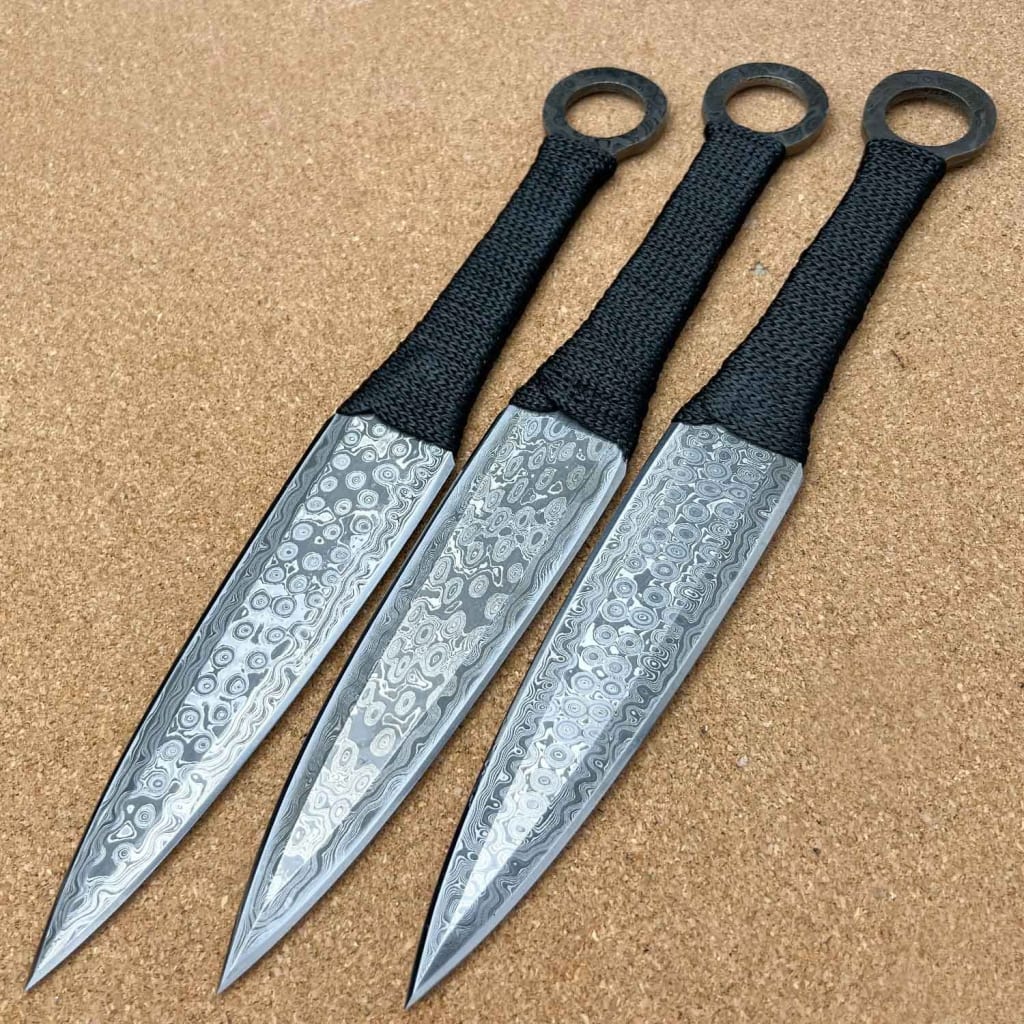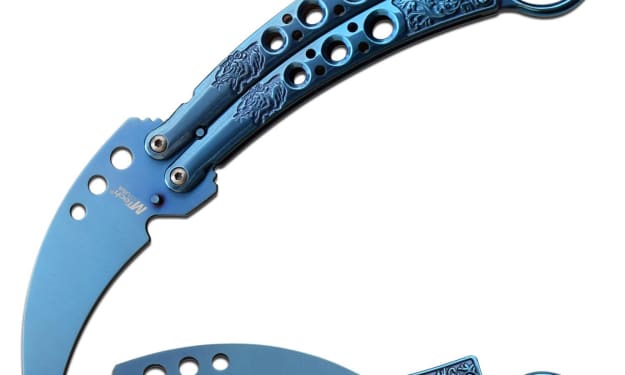Damascus Steel vs. Stainless Steel What's the Difference?
Damascus Steel

A look back through the history of the Damascus steel blade reveals some interesting facts. These steel blades were created from an alloy of approximately 70% carbon and 30% iron, and they were quite popular in Europe around the 15th century. The process of making this form of metal was complex, expensive, and time-consuming; that is why it became relatively unpopular later in the 17th century.
Nevertheless, many experts claim that a sword forged with a damascene pattern is light as well as exceptionally strong due to its high-density content (woot! about 500 grams per cubic centimeter). Although the process of creating it was complex, experts have not been able to replicate its unique properties even after more than a thousand years. As a result, new Damascus swords were never created in the past few hundred years.
These are generally very sharp and flexible. On the other hand, they are extremely fragile and it is extremely difficult to maintain their edge. This is why most of these swords ended up being sold in Europe as souvenirs because they were never meant to be used for actual combat. However, there are many stories surrounding this particular type of sword and an expert would be able to determine whether or not a particular blade was made using ancient techniques or alternatively modern tools such as lasers or water jets.
Cool Features and Specifications:
Damascus steel, also known as pattern-welding steel, is a type of steel with a distinctive 'wavy' appearance, produced by the process of forcing together different metals. The most common types are made from essentially equal parts of carbon and iron (around 1:1), but other compositions are possible.
Forging is done at high temperatures to produce blade or leaf patterns in the metal that give it its characteristic grain. It takes about 20 minutes per kg to produce one meter of material, making this steel roughly seven times more expensive than ordinary carbon steel. Because the blades of modern cutlery are usually made of high-carbon steel, this steel is most often used for knives or swords.
Damascus has been the subject of many myths and rumors due to its distinctive patterned appearance, including that it was made by magic. Most steel is made from spring steel (type 430), which has a very high yield strength but is not a true stainless steel type. When use-hardened by holding at around 1200 °C for an extended period, it can become very hard and brittle. In addition to type 430, which is common, there are also many other alloys that have been used historically for making these steels.
Damascus vs. Stainless Steel:
The blades of swords have been made out of three different types of steel, all with their benefits and drawbacks.
The first is stainless steel. Stainless steel is the most popular blade for a reason. It's extremely durable, doesn't rust or corrode, and is easy to maintain in terms of cleaning. It can also take an edge very well and it's not all too expensive for the average person to purchase or invest in one. The only problem with this material is that it can be fragile when it comes to sharpening a blade because when it does dull, the metal will often chip away because stainless steel is brittle on any hardened surface area where two different pieces meet each other like on a sword's edge.
The second type of steel is steel known to most of the world as carbon steel. This material is less expensive than stainless and can still withstand the elements and thorns and scrapes that come in contact with the blade, making it an ideal sword for any warrior. Carbon steel can be easily sharpened but is less durable than stainless steel. You can tell one from another by simply looking at their color, a stainless blade will look silverish whereas carbon steel will look dull gray or brownish in comparison.
The third type of steel is the one that most of these swords are made out of. It's known as Damascus steel and it is usually found in a blade with a pattern known as the Kukri pattern, which is formed into the blade but not all at once. This steel can be used to create both a sharp and durable blade with almost no difference between day and night except in terms of the metallic taste that some Damascus blades have when they're pulled from their sheaths while others don't have any taste at all.
Damascus blades are used by people who are known for their excellent skill with these kinds of weapons making them one of the more expensive weapon types anywhere worldwide.
Why Choose Damascus Steel Over Others?
For those of us who don't know, Damascus steel is a form of steel created out of a combination of layers of carbon and iron that have been folded together. The original use for this type of metal was to make swords due to its excellent overall properties, but it has since been used in many other applications. The name of this steel comes from one of the most famous swords made of this type of metal.
The type of steel used in this sword was one created by the Japanese swordsmith Masamune. The name Masamune refers to the man who forged the blade, but 'Masamune' is actually a generic term used to refer to all swords forged under his supervision. It was during a period in Japanese history when there were very few master smiths still alive, and some blades were considered to be more highly regarded due to their maker than the actual blade itself.
About the Creator
Mai Sophia
A Writer/blogger by day, a knife enthusiast and survivalist by night. I've reviewed a lot of products and have helped people make the right purchase






Comments
There are no comments for this story
Be the first to respond and start the conversation.